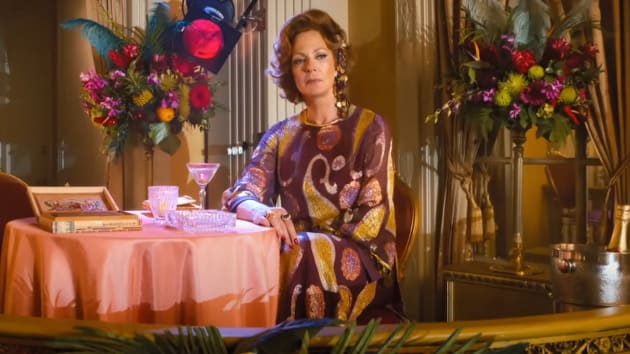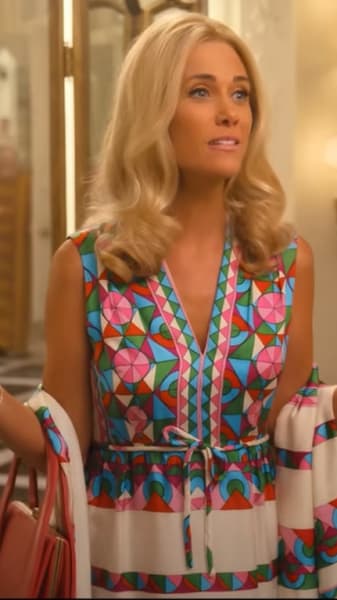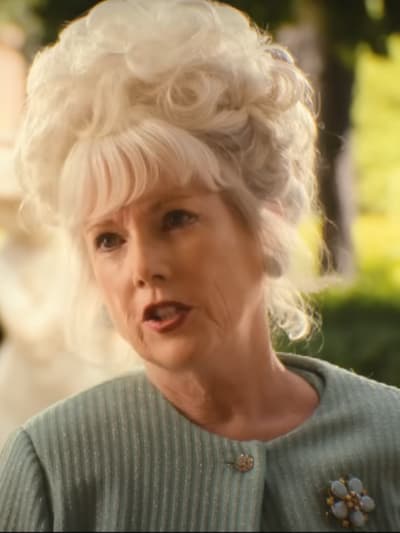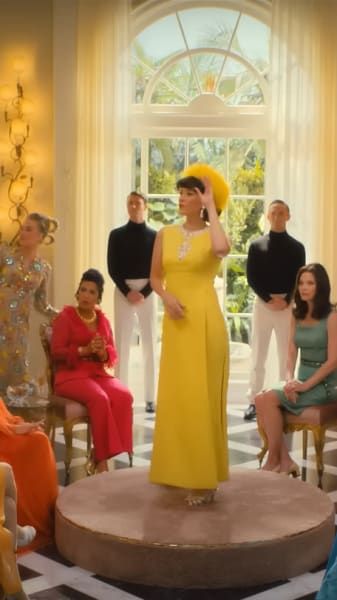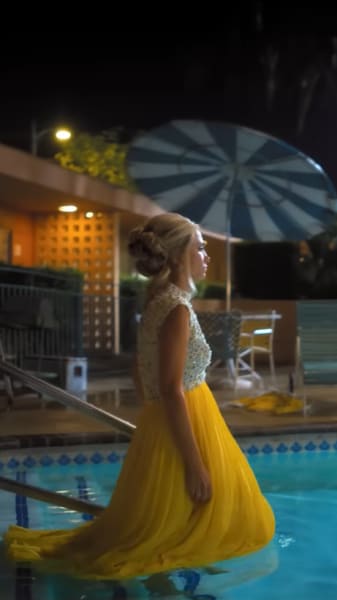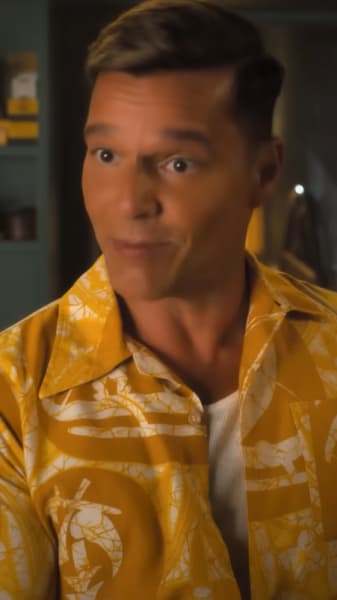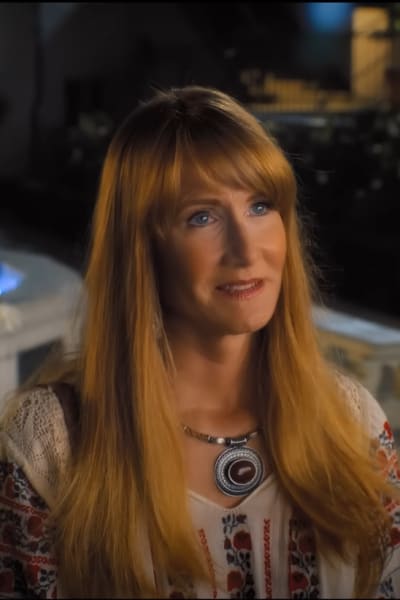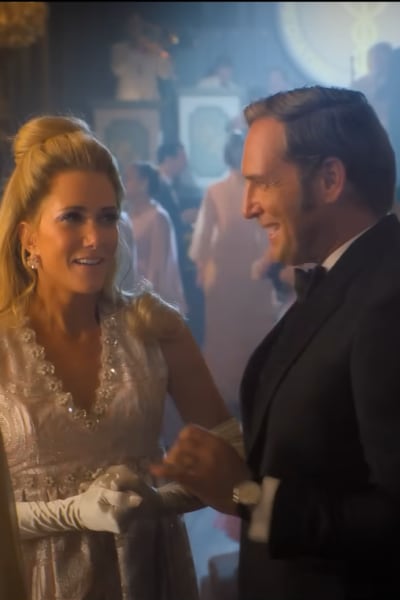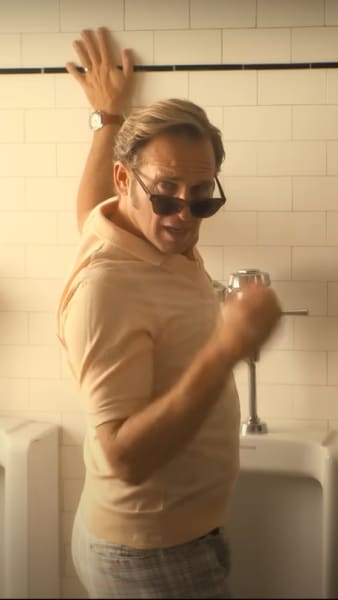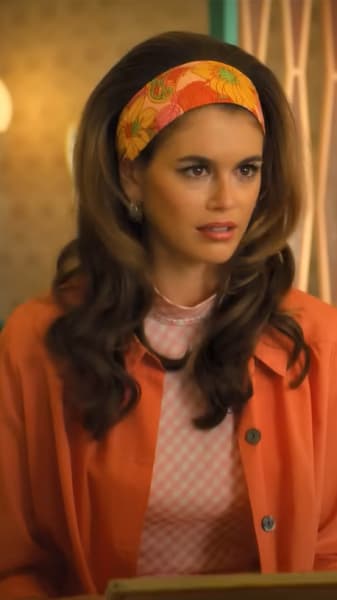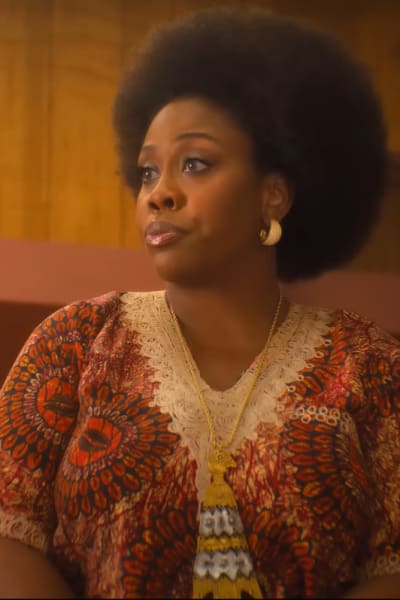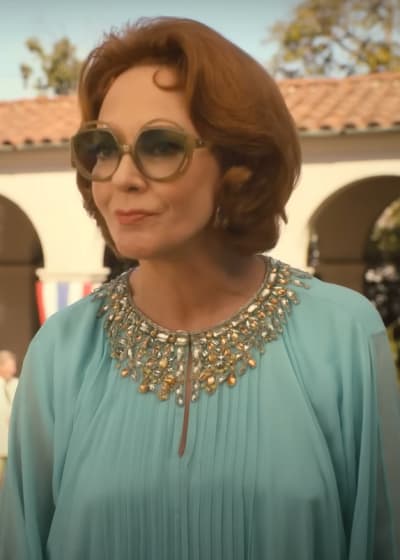Splashy and flashy (but not really trashy), Palm Royale on Apple TV+ fits easily into the ranks of high-gloss, high-concept, female-driven dramas that have enjoyed a Golden Age on premium streaming channels this past decade.
Recent series like Bad Sisters (also on Apple TV+) and Max’s Big Little Lies drew a substantial audience with a combination of star-studded ensemble casts, heavy themes, and plots from best-selling domestic thrillers like those written by author Liane Moriarty.
Palm Royale ticks many of those boxes (it’s based on the 2018 novel Mr. and Mrs. American Pie by Juliet McDaniel), but instead of sexual violence and trauma, it brings big laughs and a soapy jewel-box mystery to the female-centric limited series tablescape.
Palm Royale’s opening credit sequence immediately places the series in time and taste by evoking Valley of The Dolls and James Bond with its graphic animation.
The series follows the current social climbing misadventures of former beauty pageant runner-up Maxine Simmons (Kristin Wiig) in 1969 Palm Beach, where she is caring for a wealthy relative in a “twilight coma.”
The audience gets to revel in a pitch-perfect, glittering time capsule of a vanished world.
Big names and even bigger sunglasses fill each and every candy-colored frame of this show, with the main cast featuring Allison Janney, Laura Dern, and Ricky-freakin’-Martin!!
Also, comedy legend Carol Burnett manages to be the funniest cast member in a very crowded field WITHOUT SPEAKING ONE WORD OF DIALOGUE.
The character names contain sly nods to ’70s celebrities and products like Dinah Donahue (Leslie Bibb), Sergeant Tom Sanka (Rick Cosnett), and Mary Jones Davidsoul (Julia Duffy).
The show’s late ’60s and early ’70s costumes and set design are truly spectacular and provide the characters with a backdrop of heightened realism.
The costumes drape perfectly and actually look like they’d be comfortable to wear.
This level of attention to period detail, combined with Maxine’s increasingly wacky antics, sets the stage for a festival of campiness that never quite arrives.
The set design may be too accurate and realistic for the era because the series seems reluctant to disturb its fond nostalgia by really letting loose.
Merriam-Webster and the Urban Dictionary both use “exaggerated” in their definitions of “campy.” This fits with the images that the term springs to mind: absurd and artificial, affected and excessive.
The ’70s often serve as a shorthand for camp, perhaps because that decade boasts so many examples of the genre in TV and film. It’s also hard to ignore that the era’s aesthetics were pretty extravagant across the board.
However, could it simply be that true campiness can be captured but not pursued?
Camp can be expressed by an intentional over-the-top production (like The Rocky Horror Picture Show), but there’s also the flip side of an earnest creation that backfires and becomes camp as an inversion of that earnestness (like the so-bad-it’s-good filmography of director Ed Wood).
So, is Palm Royale truly campy, or is that even what it’s going for?
As it stands, I hope the show doesn’t continue to confuse camp’s “over-the-top” directive with “outright confusing” in terms of series plot and tone.
The pilot episode had an almost melodramatic feel between its laughs, and by the end, it seemed to position Maxine as a potentially sinister unreliable narrator.
This storyline — along with the actual Palm Royale resort that Maxine fought so hard to join — was then completely abandoned, starting with the second episode.
Ricky Martin’s character, Robert, seems to appear at will. He’s introduced as working at the Palm Royale resort but thereafter is just seen walking around the empty Dellacorte mansion in swim trunks until he’s needed to bartend from a golf cart or a charity ball.
The show swings unevenly between drama and satire, but this becomes its superpower in a way because every path it tries but can’t decide on — camp, comedy, murder-mystery, soap opera — is interesting and would be enough to keep the series compelling for the rest of the season.
Palm Royale has many fitting genres to choose from and remains a player in the field of prestigious lady-led dramas.
Laura Dern, the show’s star and executive producer, also acted on Big Little Lies, which is returning to Max for a third season.
Dern’s costar on that show, Nicole Kidman, started another series franchise with Nine Perfect Strangers, set to return for a second season on Hulu.
The show isn’t exclusively female-driven, but it’s based on another Liane Moriarty novel and shares a focus on affluent, troubled, and attractive characters.
These shows are domestic thrillers with dark themes, but they are an improvement over that brief Ghostbusters (2016) slash Ocean’s 8 time period when female actors pointed to a lack of roles, and the solution to that problem somehow became remaking male-centric films with all-female casts.
Palm Royale may avoid wallowing in overt trauma, but it still adheres to the Desperate Housewives school of thought in terms of how women stereotypically behave: back-stabbing and social climbing.
A period piece provides a “pass” of sorts because even if things weren’t as bad as in, say, Jane Austen’s time, opportunities for women fifty years ago were definitely more limited than they are now.
Marriage and social status are foregrounded as the most viable of very few options for women to provide for themselves, similar to the female characters in Pride and Prejudice.
Women’s actions are seen as just doing what they must to survive, given the constraints of their time.
This can also be seen as a narrative cop-out, using the trappings of “camp” and the ’70s to distract from the use of this same old formula of women-on-women pettiness that we can see in the 1969 Palm Beach setting.
One thing that is refreshing about Palm Royale is how the straight men/husbands are presented as loveable (so far) buffoons but not really as sexual creatures.
Also, there isn’t an emphasis (again, so far) on the women pursuing men romantically, aside from a couple of minor and almost obligatory affairs: Dinah and her tennis instructor; Mitzi (Kaia Gerber) and Dinah’s louche husband Perry (Jordan Bridges).
There’s not much emphasis on romance in general, come to think.
The women are much too occupied with advancing or maintaining their social standing in Palm Beach in the vacuum that’s been created by the grande dame Norma’s embolism.
This is one of those instances where it’s like: Yay, a group of women isn’t obsessed with men! But also: Boo, they are now completely focused on back-stabbing each other and social climbing.
A counterpoint to the Palm Beach excess is the feminist bookshop run by Linda Shaw (Laura Dern) and Virginia (Amber Chardae Robinson).
Here, the show explores the social and political issues of the time in a circle of working women of modest means.
The show offers many pleasures, not the least of which is, once again, Carol Burnett’s presence.
Jordan Bridges inhabits the role of a monied son gone to seed like he just stepped out of a portal to the ’70s and is an unexpected delight.
This series is a great showcase for Kristen Wiig to rein in her usual “over-the-top” (campy!) physical comedy to explore a comedic character that keeps a foot in reality.
She does wonderful work with her voice, giving Maxine a soft Tennessee accent and inflections that are pleasingly reminiscent of Elsbeth Tascioni.
The show succeeds by just about any metric because it’s funny, and we get to watch a group of veteran female actors DO. THEIR. THING.
Instead of being confined to small roles on projects where they STILL manage to ruin the Bell Curve for less experienced actors, these women take the opportunity they are given to unleash their expertise and run down the beach barefoot with it.
Palm Royale is just wonderful to look at — enough really can’t be said about how great the costumes and set design are.
It might rely a bit too much on those visuals to cover up story weaknesses, but it’s a great ride at the series midpoint with the promise of pulling off a solid ending.
The female-driven show‘s combination of notable performances, comedy, and visual sumptuousness make it a standout in the limited series landscape.
It’s an exciting departure from gloom and a hopeful step forward for women-centered projects that can take risks and draw an audience.
Palm Royale is definitely worth a watch, and you can catch up right now on Apple TV +!
Paullette Gaudet is a staff writer for TV Fanatic. You can follow her on X.
